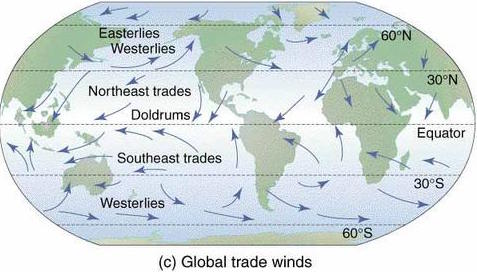Riding the Pacific trade winds

Indian Express | 13 Jul 2015
Riding the Pacific trade winds
Labour, environment and IPR standards in the Trans-Pacific Partnership will influence future Indo-US agreements.
Written by Devashish Mitra
Recently, the US Congress approved the Trade Promotion Authority (TPA), which delegates to the US president complete power to negotiate trade agreements with other countries. Under the TPA, once a trade agreement has been negotiated by the president or his representative, it is brought to Congress for ratification through an up-or-down vote. At that stage, no discussion on possible amendments is allowed.
The passage of the TPA paves the way for the successful completion of negotiations for the Trans-Pacific Partnership (TPP) by President Barack Obama on behalf of the US with 11 Pacific Rim countries, heterogeneous in various respects, including levels of development. At one extreme there are Japan, Singapore, Australia, New Zealand and Canada. At the other are Vietnam, Malaysia and Peru. The other countries are South Korea, Brunei Darussalam, Chile and Mexico. A notable omission from this list is China, although the door will be kept open for it to join the agreement now or later, if it so wishes.
The TPP is expected to be an agreement not only on trade issues such as tariff liberalisation, but also related non-trade issues such as labour and environment regulations and intellectual property rights (IPR) protection. In fact, IPR standards are expected to be much more demanding than those of the WTO. The US will aim to also bring environmental and labour standards within the TPP close to its own. In addition, the TPP is expected to have agreements on foreign investment, which will not only include IPR protection, but also have clauses to ensure non-discrimination relative to domestic investors and to prevent expropriation. There will also be liberalisation in services trade through the elimination of non-tariff barriers such as discriminatory domestic regulation.
Will the TPP affect India? The short answer is: Yes, but the overall impact is uncertain at this point. It is important to understand that there are many channels through which the TPP can affect India. First, we can expect some trade diversion and significant foreign investment diversion. A large proportion of India’s exports is in services. With the anticipated reduction in barriers to trade in services among TPP members, there is the possibility that some of India’s services exports to those countries will be replaced by services trade within the TPP. In the case of goods trade, there should not be much of an impact as the large economies within the TPP already have very low tariffs on imports from all WTO member countries.
A key component of Make in India is attracting foreign investment. If the US manages to bring TPP nations closer to its own IPR regime and make them commit to an agreement preventing expropriation, it will make it difficult for India to attract foreign investment, especially given its history of retrospective taxation. In other words, some TPP nations will then become more attractive destinations for foreign investment flows.
While the US and India have started negotiating a bilateral investment treaty (BIT), this negotiation is going to be slow. This is because there is vast divergence between the two countries’ model BITs, especially on issues of IPR and market access commitments. Thus, significant foreign investment diversion, including a deceleration in foreign investment flows to India, is a possible consequence of the TPP. In addition, the TPP reduces India’s bargaining power in its BIT negotiations with the US, as it expands the set of options available to the latter.
The TPP will also provide a template for any future agreements with the US. So, if India has to successfully arrive at any economic agreement with the US in the future, the labour, environmental and IPR standards in the TPP will become the minimum requirements of such an agreement. This, through spillover effects, will also be true of agreements with other countries. For example, the Regional Comprehensive Economic Partnership (RCEP) is a proposed agreement between Asean nations and six other countries, including India. There is a large overlap in the memberships of the TPP and the RCEP, so that if the TPP is the first of the two to be put in place, the TPP standards will get into the RCEP through the common member countries. This is a possibility, even though the RCEP is being envisioned as a more flexible trade agreement that does away with a one-size-fits-all approach.
One positive for India from the TPP would be the active role played by the US in the region that will, to a certain extent, neutralise China’s power in the neighbourhood. Some of the potential signatories to the TPP, such as Vietnam, South Korea, Japan, etc, are also hoping for such an outcome. The TPP will impact India along multiple dimensions. But the overall long-run effect is somewhat uncertain, as there are several players involved whose behaviour is difficult to predict accurately.
The writer is professor of economics and Cramer Professor of Global Affairs at the Maxwell School of Citizenship and Public Affairs, Syracuse University, New York





